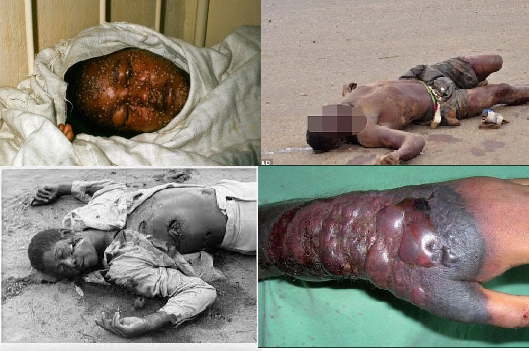The outbreak of Ebola virus disease in west Africa continues to evolve in alarming ways, with no immediate end in sight. Many barriers stand in the way of rapid containment.
The most severely affected countries, Guinea, Liberia, and Sierra Leone, have only recently returned to political stability following years of civil war and conflict, which left health systems largely destroyed or severely disabled.
Lack of capacity makes infection control difficult
This lack of capacity makes standard containment measures, such as early detection and isolation of cases, contact tracing and monitoring, and rigorous procedures for infection control, difficult to implement. Though no vaccine and no proven curative treatment exist, implementation of these measures has successfully brought previous Ebola outbreaks under control.The recent surge in the number of cases has stretched all capacities to the breaking point. Supplies of personal protective equipment and disinfectants are inadequate. The outbreak continues to outstrip diagnostic capacity, delaying the confirmation or exclusion of cases and impeding contact tracing.
Diagnostic capacity is especially important as the early symptoms of Ebola virus disease mimic those of many other diseases commonly seen in this region, including malaria, typhoid fever, and Lassa fever.
Some treatment facilities are overflowing; all beds are occupied and patients are being turned away. Many facilities lack reliable supplies of electricity and running water. Aid organizations, including Médecins Sans Frontières (Doctors without Borders), which has provided the mainstay of clinical care, are exhausted.¨
Managerial framework for Ebola
Yesterday, the WHO Director-General, Dr Margaret Chan, announced a new managerial framework designed to ensure that WHO’s emergency response is fully staffed, drawing on personnel in all WHO regional and country offices, for an around-the-clock response.The Ebola virus is one of the world’s most virulent pathogens. Personal protective equipment is essential, but in short supply. It is also hot and cumbersome, severely limiting the number of hours that medical and nursing staff can work on an isolation ward. On present estimates, a facility treating 70 patients needs a minimum of 250 health-care staff.
Fear is hard to overcome
Six months into the outbreak, fear is proving to be the most difficult barrier to overcome. Fear causes contacts of cases to escape from the surveillance system, families to hide symptomatic loved ones or take them to traditional healers, and patients to flee treatment centres. Fear, and the hostility it can feed, have threatened the security of national and international response teams.Health-care staff fear for their lives. To date, more than 170 health-care workers have been infected and at least 81 have died.
Outbreak control is further compromised when fear causes airlines to refuse to transport personal protective equipment and courier services to refuse to transport properly and securely packaged patient samples to a WHO-approved laboratory.
Fear has spread well beyond west Africa, leading some to suggest that imported cases, also in wealthy countries, could ignite widespread infections in the general population. In countries with well-developed health systems, such a scenario is highly unlikely, given the epidemiology of the Ebola virus and experiences in past outbreaks.
Transmission
The Ebola virus is highly contagious, but is not airborne. Transmission requires close contact with the bodily fluids of an infected person, as can occur during health-care procedures, home care, or traditional burial practices, which involve the close contact of family members and friends with bodies. In Guinea, around 60% of cases have been linked to these burial practices, with women, who are the principal care-givers, disproportionately affected.The incubation period ranges from 2 to 21 days, but patients become contagious only after the onset of symptoms. As symptoms worsen, the ability to transmit the virus increases. As a result, patients are usually most likely to infect others at a severe stage of the disease, when they are visibly and physically too ill to travel.
Vigilance means better detection
On the positive side, fear has led to a very high level of vigilance and clinical suspicion worldwide, as seen in the number of false alarms at airports and in emergency rooms. Such a high level of alert further increases the likelihood that any imported case will be quickly detected and properly managed, limiting onward transmission.This pattern was clearly seen during the 2003 SARS outbreak. Of the total number of cases during that outbreak, 98% occurred in the four countries affected prior to the WHO global alert issued on 15 March. The high level of vigilance and preparedness that followed that alert helped the additional 26 outbreak sites with imported cases to prevent onward transmission or hold it to just a handful of cases.
Also on the positive side, the presidents of the hardest-hit countries have made outbreak containment a top national priority. Several extraordinary measures have been introduced over just the past few days, though it is too early to assess their impact.
In some areas, the inclusion of social anthropologists on outbreak teams is helping to reduce fear and change behaviours. The fact that no effective medical treatment exists has enforced the desire of families to care for patients in their homes or turn to traditional healers. Many communities now understand the importance of managing symptoms through supportive care. Evidence that early detection and supportive care greatly improve prospects for survival is a powerful incentive to seek medical care.
An Emergency Committee, convened under the provisions of the International Health Regulations, is currently under way to determine whether the outbreak meets the criteria for a public health emergency of international concerned. If so, experts on the Committee will recommend temporary measures that countries should take to reduce further international spread.




 Taken Internet |
Taken Internet | 





